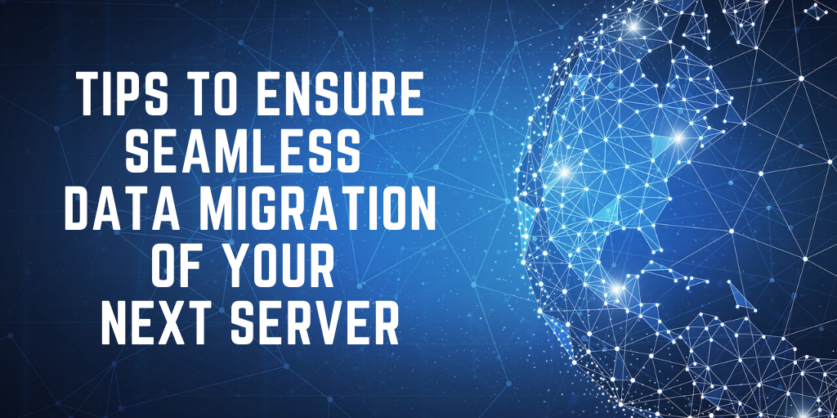
Are you considering moving to a better hosting provider in 2020? Most of the business doesn’t move out of poor quality hosting providers because of the “what-if” scenario. When we spoke to our clients, this fear is most cited. This is what creates a hurdle with small businesses to move to better hosting. Apart from some basic fear clients have other fears too:
- Not being able to replicate the same custom setup from your old server to the new server
- Fear that your migration is too “large scale” and will run into business-impacting problems.
Server migrations can be complex. You need a team of experts who can guide & consult you with the same. This is why at Geek Crunch Hosting, we have a dedicated team for migration, who will provide advice & consult you with all your queries.
With Geek Crunch Hosting, we have also developed internal processes & technologies to ensure that migrations are done with minimum downtime or even close to zero downtime.
At GCH we are here for you and always prefer clients to have a hand-on approach towards migrations. Clients who approach migrations with a hands-off mentality tend to have more complications during this process, and transfers can take longer without proper communication.
We have completed over 2,000 migration cases. Be it WordPress, custom PHP Applications, LMS or complete Servers/VPS from other providers to us.
Define Scope of Work Clearly
It is important to know clearly what is included in the scope of work. Different businesses will have different infrastructure configurations. Which makes it a necessity to clearly define what is included in the migration.
- Are you moving a single site or an entire server?
- What type of database server are you running?
- How many databases need to be moved?
- Are there any email accounts that need to be moved? (If yes are they on IMAP?)
- HTTP to HTTPS?
- SSL Certificates
- Swap space
- With or without Control Panel (or cross panel migration)
- Any additional special considerations before beginning the server migration?
- Are there any outside providers (domain name, DNS Services, CDN, etc)
Clarifying the scope of the project upfront is the first step in successful server migration. As part of the process, we ALWAYS include the second sync before the new server going in production.
Identify Outside providers or services
A business may use outside providers like:
- Domain Name Register
- Name Servers (if your name server is not on the source server)
- DNS Services
- CDN Services
- Backup services (if restricted with IP)
- rDNS/PTR records
- ….etc….
Outside providers or services are those that are not part of the source server. Make sure before the migrations start necessary login details and credentials are provided so that the migrations can be completed smoothly. If you want to do it yourself, then ensure you have access to all the services that are not part of the source server.
New Server Configuration
Sizing of storage is a prime concern when on the target server. Generally a rule of thumb there needs to be an extra 25% free usable storage for a smooth migration. Surely, when it comes to GCH, we can always provide you with temporary network storage where source compressed files are saved and unpacked on the server.

Sizing of storage is also important when it comes to dedicated servers, if your data grows faster, you will need physical disk upgrades. With GCH Cloud, we are able to provide you with storage as and when you need to expand.
Server reconfiguration will only delay the migration process. Please consult with our experts before you start your migration process, helping you to get the right server configurations.
Server Clean Up
Almost all the server has some amount of obsolete data. It could be unwanted backups, decommissioned email accounts, etc. Taking time to clean up the server will make migration faster and easier.
The data transfer takes time, having fewer data to be transferred faster your migration will be completed and it will not create issues with the second sync that we perform before going live.
Known Dependencies
Whenever sites & applications are being migrated it is important to install the known dependencies before the data starts to migrate. Not all applications or sites are the same. There is no such thing as “one size fits all”
- Dependencies Related to Security
- Dependencies on Other Databases
- CMS (WordPress, Joomla, Magento, etc.) Specific Dependencies
- For a partial migration, references to other local (source) databases
- External Files (using IP restricted cURL etc)
If they are not properly defined, it will take longer for migration to be completed as a team will need to check & figure out which are the dependencies that are required.
Auditing and validating
Most of the hosting companies or 3rd party migration companies will lie to you that there are only two steps. They are always wanting to close the ticket ASAP. Focus to ensure that migration is done properly is more or less missing. What happens, in turn, is that the old server is destroyed and if migration is not done properly, data is lost or system crashes, etc.

At GCH we have a practice is to ensure that the validity of migration is done. We always advise clients to “power down” not to give back or destroy their old server and monitor the site for a few days before destroying the source server.
Validation Checklist
- Check to see if all required services are functioning
- Check your site for 404 errors, 500 errors, PHP warnings, etc.
- Update all server software to the latest version
- Tune LAMP performance (Apache, MySQL, PHP)
- Test the cron
- Check email deliverability and email records (DKIM, SPF, etc.)
- Verify mail is synced (i.e. that all messages are there and all contacts have been migrated)
- Check backups are still working
- Ensure whitelisting of IP for any specific IP based API’s that are being used
Security Checklist
- Audit firewall configuration
- Identify and implement non-standard security requirements
- Restrict access where appropriate
- Implement programs to educate staff
- Ensure setup is compliant with all protocols
Configuration Checklist
- Analyze configurations of both old and new hosting environments
- Configure web server modules (i.e. suexec, mod_php, mod_perl, mod_ssl, etc.)
- Identify shared libraries and other code/program dependencies
- Set up SSL certificates
- Create fresh (or import existing) configuration files
- Import databases
- Fine-tune server performance
- Check and reconfigure applications that connect from remote sources
User Account Checklist
- Migrate user accounts and passwords
- Forcing password reset on next login
- Purge old/inactive accounts
File System Checklist
- Ensure all files copied over
- Check that the permissions are correct
- Crawl website to identify 404 not found errors
Final Check Checklist
- Were all of the issues addressed during migration?
- Was the migration painless? If not, what went wrong?
- Are you happy with your new server?
- What else (if anything) needs doing?
Geek Crunch Hosting Makes Server Migrations Easy
Server migration doesn’t have to be a daunting task. Although it is not an easy ride if you are not sure what you are doing. Which is why you need experts who can ensure your migration is easy without headaches.

When you are with Geek Crunch Hosting, we will ensure & help you to settle in your new infrastructure. No contracts, transparent pricing, and an entire team dedicated to help you migrate your data from your current host. Geek Crunch Hosting is dedicated to helping you succeed in your business on the web. Whether you have an existing server that needs to be transferred or are starting fresh, our team of experts will help make your life easier and your migration as smooth as possible.

No Comments - be the first.